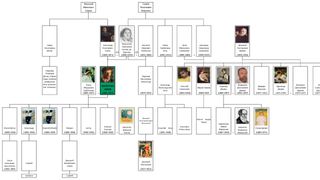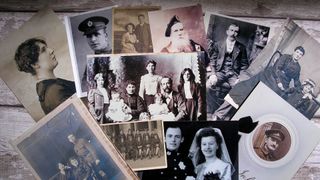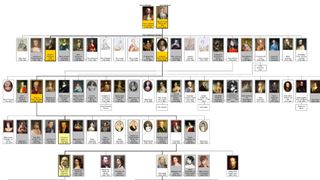Most people will agree that family is one of the most important things in life. We learn about our living family members every day by simply talking to them, but when it comes to knowing our great-grandparents and generations past, the majority will draw a blank.
Learning more about your family history is as interesting as it is revelatory. By delving into your family’s past, you can gain a better understanding of how you came to be in this world, and it can even help to explain the littlest details such as how you inherited the crook in your nose or the root of your undying stubbornness. You could even discover a connection to someone you had no idea ever existed.
The best way to do this is by creating a family tree, a visual diagram of your ancestry. A family tree uses lines or ‘branches’ to connect individuals in your family together, creating a bigger picture of your family history. Here's how family trees work. And if you feel inspired to start your own, we have a guide to the best family tree makers available today.

Nowadays, creating a family tree is easier than ever. Available at the tap of a finger, anyone with a slight interest in their lineage can create a quality family tree online, and you don’t need to be a genealogy expert.
There are dozens of genealogy websites and ancestry apps designed for the sole purpose of helping you accurately research, present, flesh out the information in your tree.
The best part is, you’re completely in control, so you can make your tree as simple or as elaborate as you want, whether your aim is to frame it as a family heirloom or share it with relatives online. Either way, the end product can be passed down through the generations and added to as your family grows. Here's more on why family history is so important.
What is a family tree?
A family tree, as the name suggests, is a chart in the shape of tree. Also named a genealogy chart, the family tree is a way to view your family history all in one place, in an easy-to-read diagram which can be embellished with photos and details such as birthdays, marriages, and the date of passing away.
How does a family tree actually work?
Typically, the family tree starts with one person as the root and this is usually the person who is creating the chart. Each box or ‘leaf’ represents an individual in the family and lines or ‘branches’ are drawn between family members to illustrate their relationship to each other.
Each generation of the family sits on the same level, with the older generations above the youngest, so it’s easy to see who was born first.

A horizontal line links together a married couple whereas a bracket pointing to a set of boxes below means they’ve had children together.
Usually, a family tree will be drawn vertically but it’s not uncommon for some of them to grow sideways too, more like a vine than a tree!
The tree will reach back as far as possible, until it’s impossible to find older family records, which are too commonly lost to floods, war, or misplacement, typically around three or four generations back.
How do I make a family tree?
Making a family tree is a lot like putting the pieces of a puzzle together. Although you don’t need to be an expert to make a quality family tree, it will take time to glean the information you need from different sources.
First, you’ll want to gather as much information as possible about your relatives. This is the exciting part, because it doesn’t just mean the boring details like their birthdays or date of death. It could also be unique features like what type of house they lived in, whether they created a book or invention, or where they worked.
One of the best places to start is by chatting to living family members who tend to unwittingly hoard a treasure-trove of information about relatives you don’t know.
Alternatively, useful physical records include libraries and public record offices which store birth certificates, marriage certificates, and wills, to help fill in the gaps.

Nowadays, though, almost everything you need is online. Genealogy websites and ancestry apps like Ancestry.com store billions of historical records, including court documents, newspapers, and yearbooks. Some of the more basic sites are totally free, making it a great starting point for newbies, but most are available at an affordable monthly subscription.
If you’re interested in tracing your genetics and biology, a DNA testing kit can help you dig even deeper by uncovering scientific information about your genetic makeup which can be linked to ancestors. There’s the chance you could discover a genetic illness too.
If you’re more interested in the living, people search sites can help you track down relatives who are still alive.
Once you’ve gathered all the information you need, there are plenty of downloadable family tree makers with cool scrapbooking features which do most of the hard work for you, helping you present and print off your findings.
The chart should be as easy to read as possible, so you’ll want to identify the most important information you want to show and keep it simple. Pictures will make your family tree come to life, so you can make use of photo scanning services to get all your old photos digitized.
How long does it take to make a family tree?
If you’re committed to painting an accurate picture of your family’s past, you’ll want to put some time and energy into the research stage. The best part about creating a family tree is that it’s fun and exciting, making it the perfect hobby to work on gradually over weeks or months.
At the end, you’ll have a keepsake which could be kept online for the whole family to access or printed and framed so it can be passed down generations to come. Better yet, reading through the family tree is a whole family activity and you get to enjoy the tales and questions with your siblings, children, or grandchildren.

